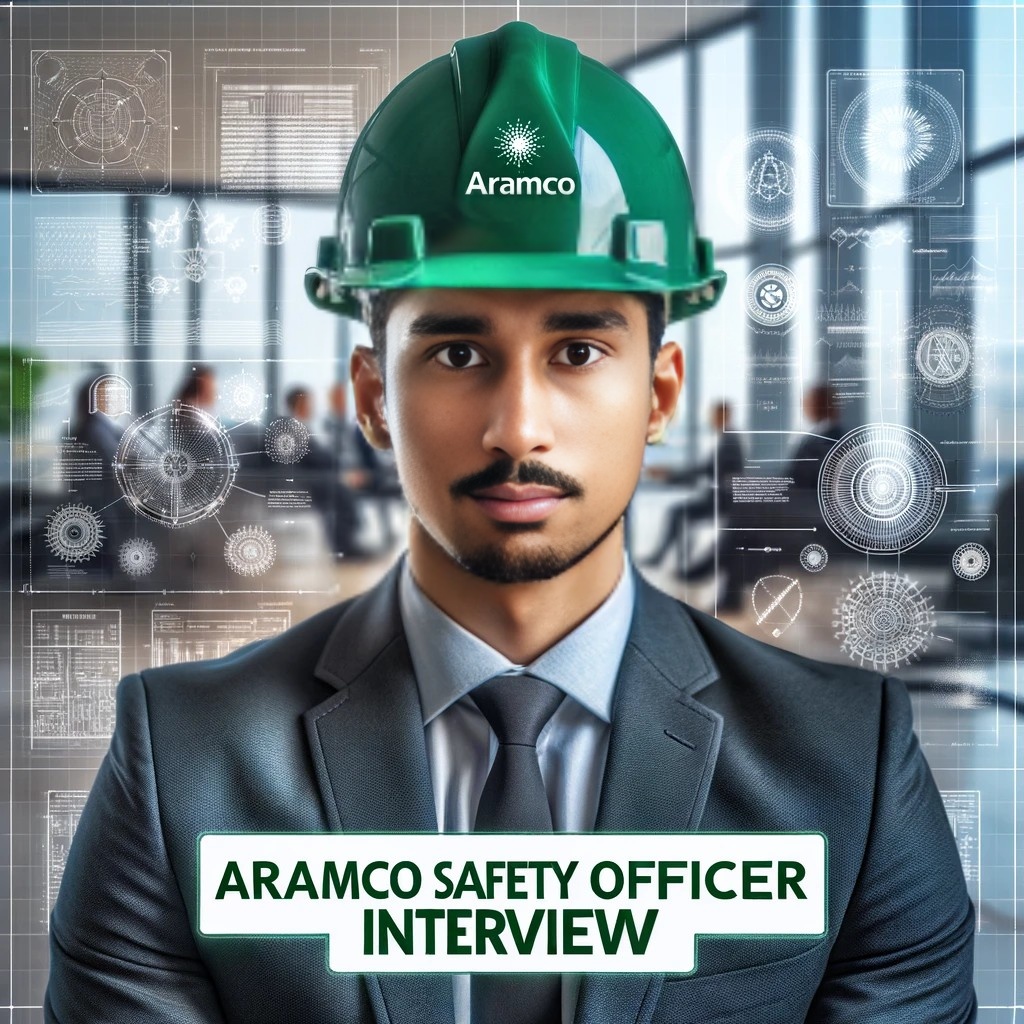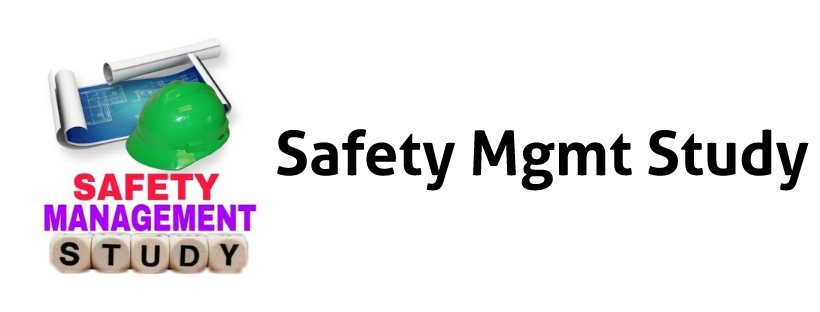Ultimate Guide to Acing Your Saudi Aramco Safety Officer Interview
Aramco Safety Officer Interview
Welcome to the most comprehensive guide for aspiring Safety Officers aiming to join the prestigious ranks of Saudi Aramco in Jubail. This guide not only prepares you for the most commonly asked interview questions but also equips you with strategic answers to showcase your expertise and readiness for this critical role.
 |
| Saudi Aramco Safety Officer Interview Guide |
Introduction to the Role
A Safety Officer at Saudi Aramco plays a pivotal role in maintaining and enhancing the company's renowned safety standards. Before we dive into the interview questions, it's crucial to understand the qualifications, certifications, and experience that set the foundation for a successful career in this field.
Key Interview Questions and Expert Answers
1. Introducing Yourself
Question: Can you tell me about yourself?
How to Answer: Start with your name, where you're from, your qualifications, and certifications. Detail your work experience, including companies, positions, and major projects you've contributed to.
2. Understanding NEBOSH
Question: What is NEBOSH?
Answer: NEBOSH stands for the National Examination Board in Occupational Safety & Health. It's a UK-based organization offering certifications in health, safety, and environmental management.
3. The Core Elements of NEBOSH IGC
Question: What are the elements of NEBOSH IGC?
Answer: NEBOSH IGC covers 11 crucial elements, including workplace health and safety management, risk understanding, health and safety monitoring, and more, focusing on both physical and psychological health, equipment safety, and environmental concerns.
4. JSA vs. Risk Assessment
Question: What is the difference between JSA and Risk Assessment?
Answer: Job Safety Analysis (JSA) focuses on identifying risks for specific tasks, while Risk Assessment evaluates hazards across the workplace, employing a risk matrix to determine risk levels.
5. Lock Out Tag Out (LOTO) Procedures
Question: What is LOTO?
Answer: LOTO stands for Lock Out Tag Out, a safety procedure used to ensure that dangerous machines are properly shut off and not started up again before the completion of maintenance or repair work.
6. Defining Safety and Its Importance
Question: What is Safety?
Answer: Safety is the state of being free from danger and conditions that can cause harm to individuals or damage to property and the environment.
7. The Role of a Safety Officer
Question: What are the responsibilities of a Safety Officer?
Answer: A Safety Officer advises on safety aspects, monitors compliance with safety regulations, conducts safety training, identifies hazards, and takes part in accident investigations and safety audits, among other duties.
8. Confined Spaces: Hazards and Types
Question: What is a confined space? What are its hazards?
Answer: A confined space is not designed for human occupancy, has limited entry or exit, and can contain dangerous gases or lack ventilation. Hazards include oxygen deficiency, toxic gas presence, and poor ventilation.
9. Managing Safety in the Workplace
Question: Why should we manage Safety at the workplace?
Answer: Managing workplace safety is essential for moral, legal, and financial reasons, ensuring a safe environment for all employees.
10. Isolation Techniques and Types
Question: What is isolation, and what types are there?
Answer: Isolation involves creating a physical barrier to prevent the accidental release of hazardous materials. It includes primary and positive isolation methods to ensure safety during maintenance activities.
11. The Significance of Hazard Identification
Question: What is a Hazard? What is Risk?
Answer: A hazard is any potential source of harm. Risk is the likelihood of that harm occurring. Identifying both is crucial for implementing effective safety measures.
Additional FAQs for Saudi Aramco Safety Officer Interview
Frequently Asked Questions
-
What is the significance of managing health and safety at work?
Managing health and safety ensures a safe and efficient work environment, reduces accidents and illnesses, and complies with legal obligations.
-
What is the purpose of safety monitoring and measuring?
Safety monitoring and measuring help in assessing the effectiveness of safety measures and identifying areas for improvement.
-
How do you handle chemical and biological agents safely?
Handling involves proper storage, use of PPE, training, and adherence to safety data sheets (SDS) guidelines.
-
What are general workplace safety issues?
They include slips, trips, falls, ergonomic issues, and emergency preparedness.
-
What safety considerations are involved with work equipment?
Considerations include regular maintenance, proper training for use, and ensuring equipment meets safety standards.
-
What are the best practices for fire safety management?
Best practices include fire risk assessments, emergency evacuation plans, fire detection and suppression systems, and fire safety training.
-
How is electricity a hazard, and how can it be controlled?
Electricity can cause shocks, burns, and fires. Control measures include insulation, grounding, circuit protection, and safe work practices.
-
What steps are involved in conducting a risk assessment?
Identify hazards, determine who might be harmed and how, evaluate risks, record findings, and review the assessment regularly.
-
What are the consequences of not following safety regulations?
Consequences can include workplace accidents, legal penalties, increased insurance costs, and damage to reputation.
-
How do safety officers contribute to workplace safety culture?
They promote safety awareness, provide training, implement safety programs, and encourage employee participation in safety initiatives.
-
What is the role of PPE in workplace safety?
PPE protects employees from specific hazards and is considered the last line of defense in risk control measures.
-
What are the legal responsibilities of employers regarding workplace safety?
Employers must provide a safe work environment, conduct risk assessments, provide safety training, and ensure compliance with safety laws.
-
How can safety training reduce workplace accidents?
Training raises awareness of safety risks and teaches employees how to avoid accidents and respond to emergencies.
-
What is a safety audit, and why is it important?
A safety audit evaluates the effectiveness of a company's safety programs, identifying strengths and areas for improvement.
-
How do you prepare for a safety officer interview at Saudi Aramco?
Prepare by understanding Saudi Aramco's safety standards, reviewing safety concepts, and practicing answers to common safety questions.
-
What makes a successful safety program?
Success factors include management commitment, employee involvement, proper training, and regular evaluation of program effectiveness.
-
How important is emergency preparedness in workplace safety?
It's crucial for minimizing the impact of unexpected incidents, ensuring quick and effective responses to emergencies.
-
What is the difference between a safety inspection and a safety audit?
Inspections are regular checks to identify hazards; audits are more comprehensive evaluations of the entire safety program.
-
How do safety officers enforce safety regulations?
They enforce regulations through inspections, training, reporting, and implementing corrective actions for non-compliance.
-
What is the impact of workplace safety on business performance?
Effective safety practices reduce accidents, improve employee morale, and increase productivity, positively impacting business performance.
-
What strategies should a Safety Officer employ to manage stress in the workplace?
Strategies include promoting a supportive work environment, offering stress management resources, and encouraging regular breaks and physical activities.
-
How can a Safety Officer ensure compliance with both Saudi Aramco and international safety standards?
By staying updated with standard changes, conducting regular training sessions, and implementing comprehensive safety audits and inspections.
-
What are the challenges of implementing a safety culture in a diverse workplace, and how can they be overcome?
Challenges include language barriers and cultural differences. Overcome these by offering multilingual training and promoting inclusivity in safety programs.
-
How does technology impact workplace safety, and what tools should a Safety Officer be familiar with?
Technology enhances safety through better risk management tools, safety training apps, and incident reporting software. Familiarity with these technologies is essential.
-
What is the importance of safety leadership, and how can a Safety Officer exhibit it?
Safety leadership is crucial for setting a positive example and motivating others. It can be exhibited through proactive safety management and effective communication.
-
How can a Safety Officer effectively manage contractor safety?
By ensuring contractors understand and comply with the company's safety policies through rigorous training, assessments, and regular safety performance reviews.
-
What role does a Safety Officer play in environmental protection at Saudi Aramco?
The role involves ensuring compliance with environmental regulations, promoting sustainable practices, and managing waste and emissions responsibly.
-
How can a Safety Officer stay current with changes in safety regulations and best practices?
By attending professional development courses, participating in safety organizations, and subscribing to safety publications and updates.
-
What are the key components of an effective safety communication plan?
Key components include clear messaging, regular safety meetings, accessible safety information, and open channels for reporting safety concerns.
-
How does a Safety Officer contribute to incident investigation and analysis at Saudi Aramco?
By leading or participating in investigations, identifying root causes, and recommending corrective actions to prevent future incidents.
-
What measures should be taken to ensure the safety of workers in extreme temperatures?
Measures include providing appropriate personal protective equipment, offering heat stress training, and ensuring adequate hydration and rest periods.
-
How can a Safety Officer promote a proactive rather than reactive approach to safety?
By focusing on hazard identification and risk assessment, encouraging early reporting of potential risks, and implementing preventive measures.
-
What is the importance of ergonomics in the workplace, and how can it be improved?
Improving ergonomics reduces the risk of musculoskeletal injuries. It can be improved by ergonomic assessments and adapting workstations and practices to fit employee needs.
-
What are the best practices for managing safety in high-risk areas?
Best practices include conducting specialized risk assessments, implementing strict access controls, and providing advanced safety training and equipment.
-
How should a Safety Officer address safety concerns raised by employees?
Concerns should be addressed promptly through investigation, taking corrective actions, and communicating the resolution process to the concerned employees.
Final Thoughts
Conclusion
Safety Officer Job interview questions and answers for Aramco


.jpg)









.png)


1 Comments
Very informative👍
ReplyDelete